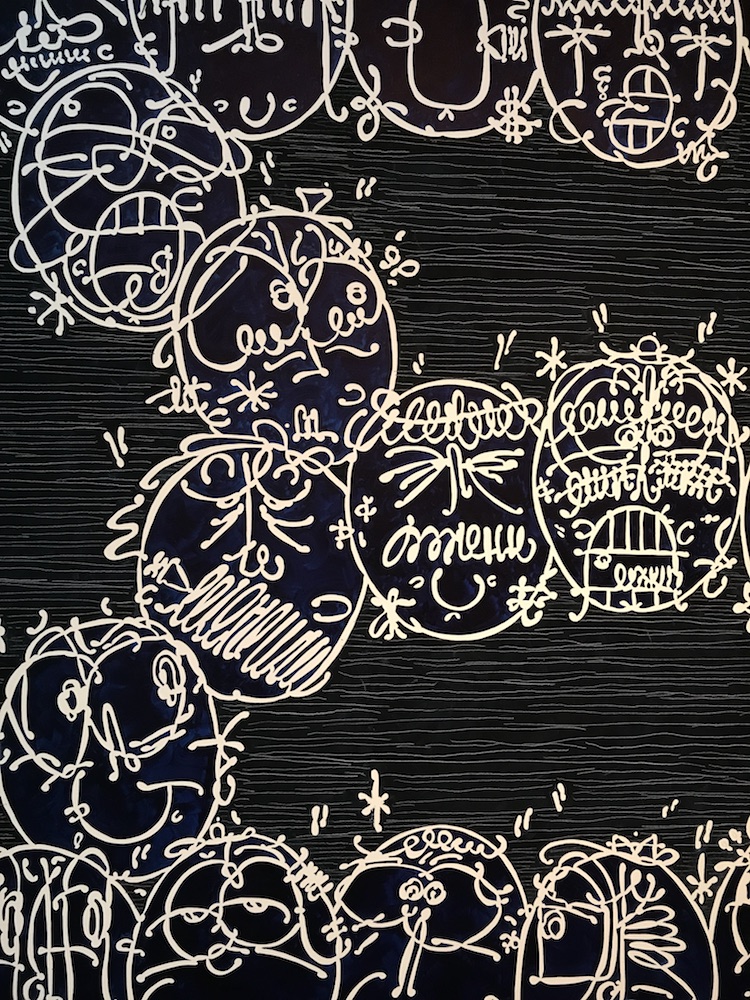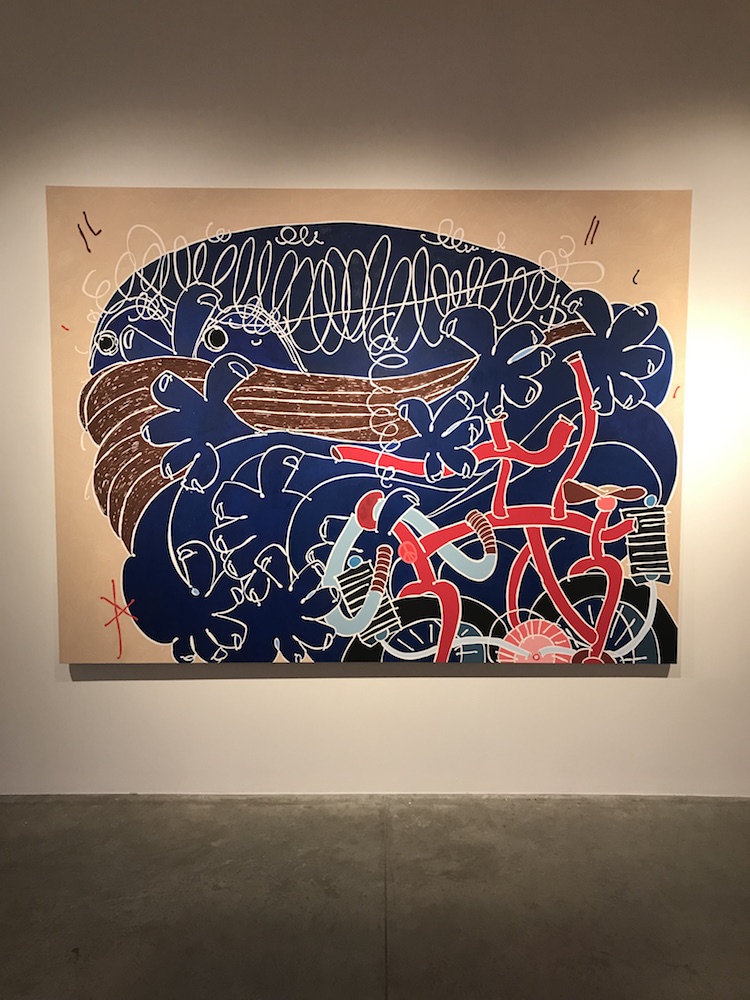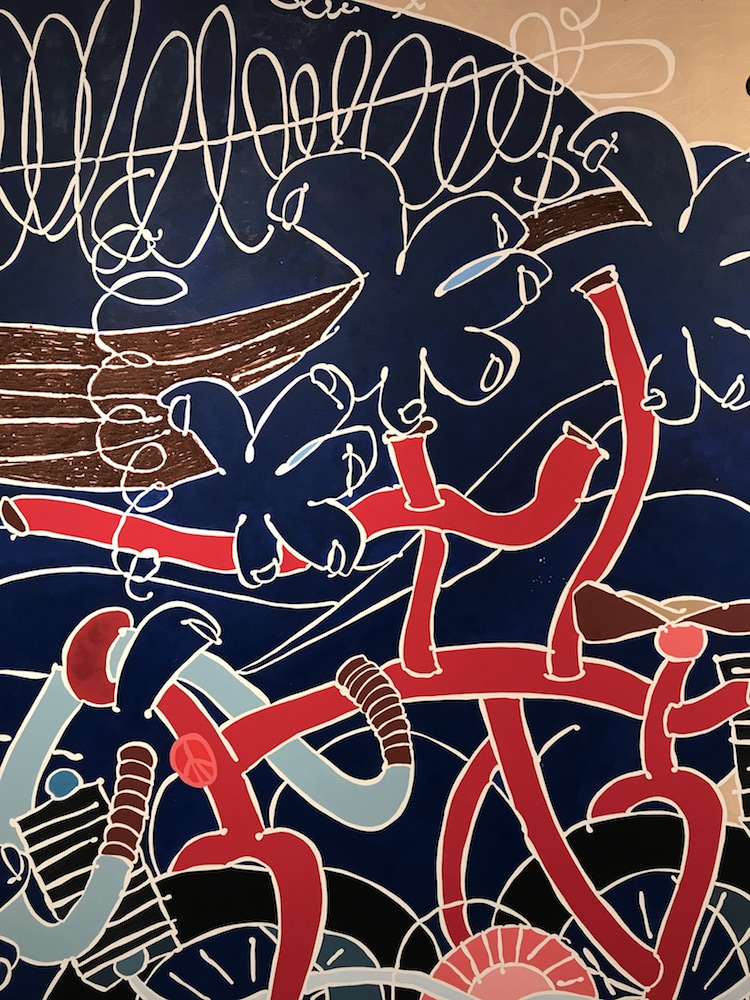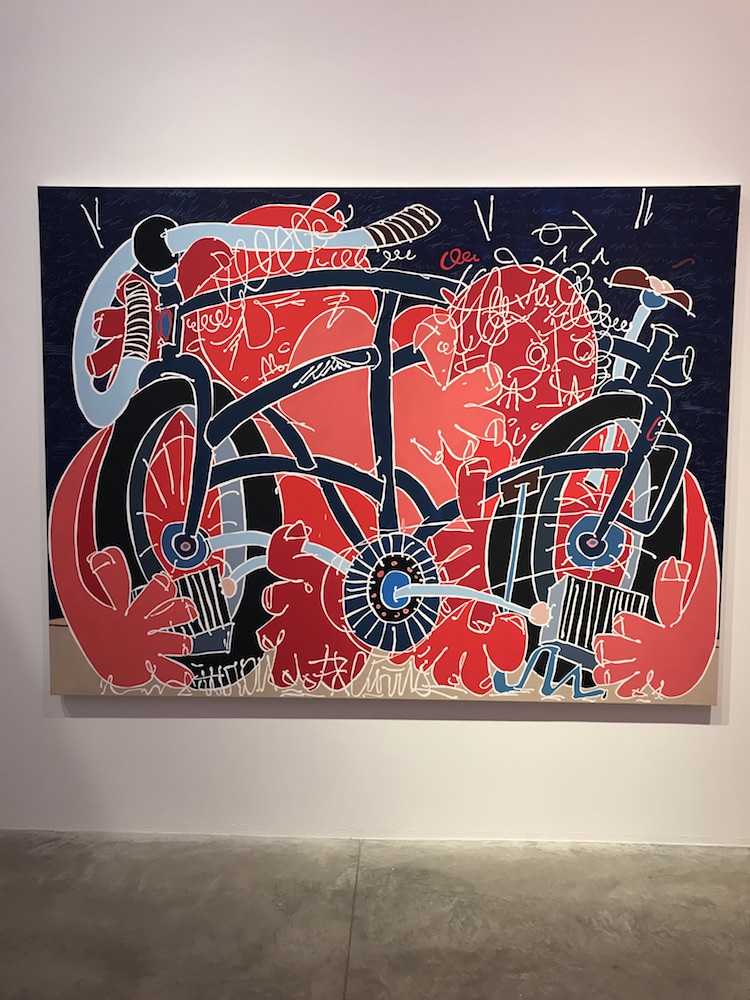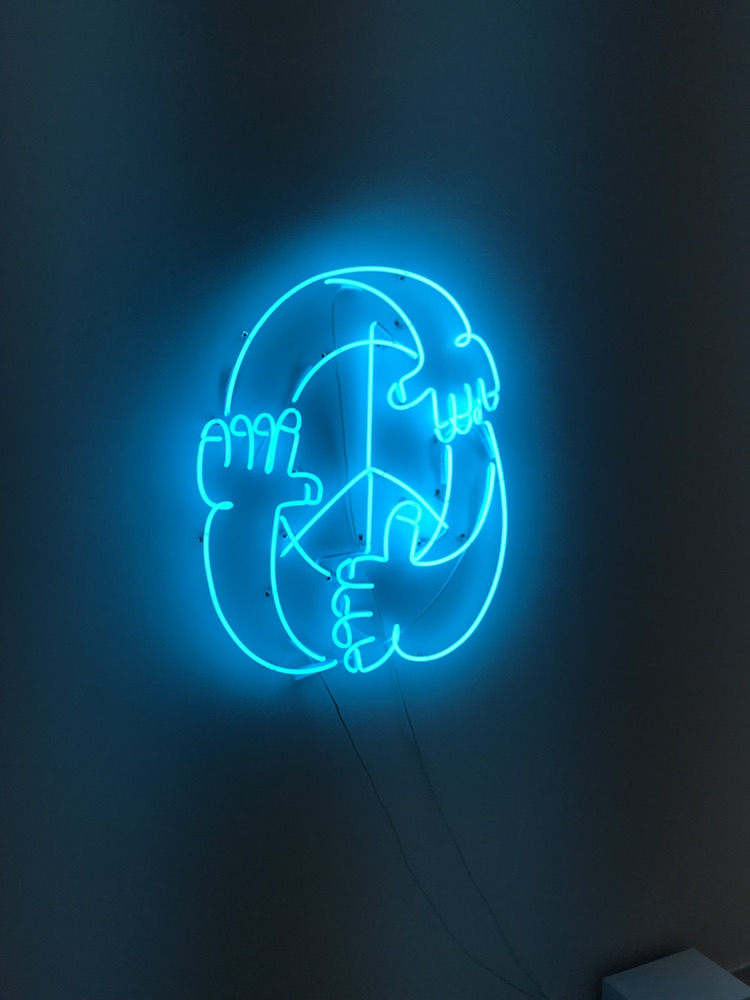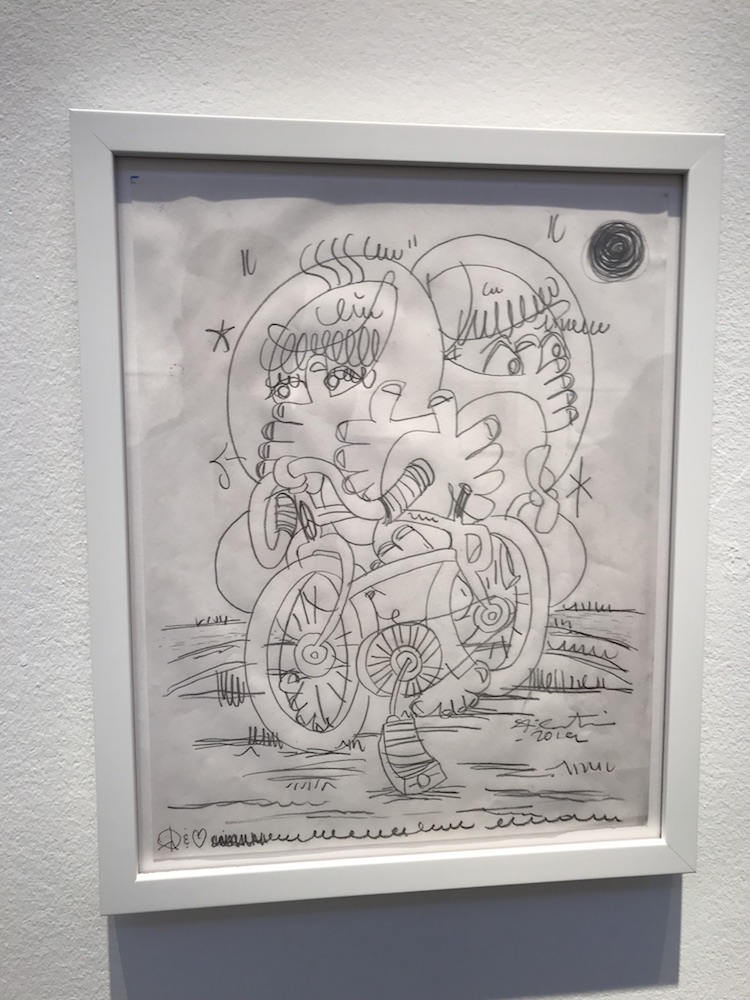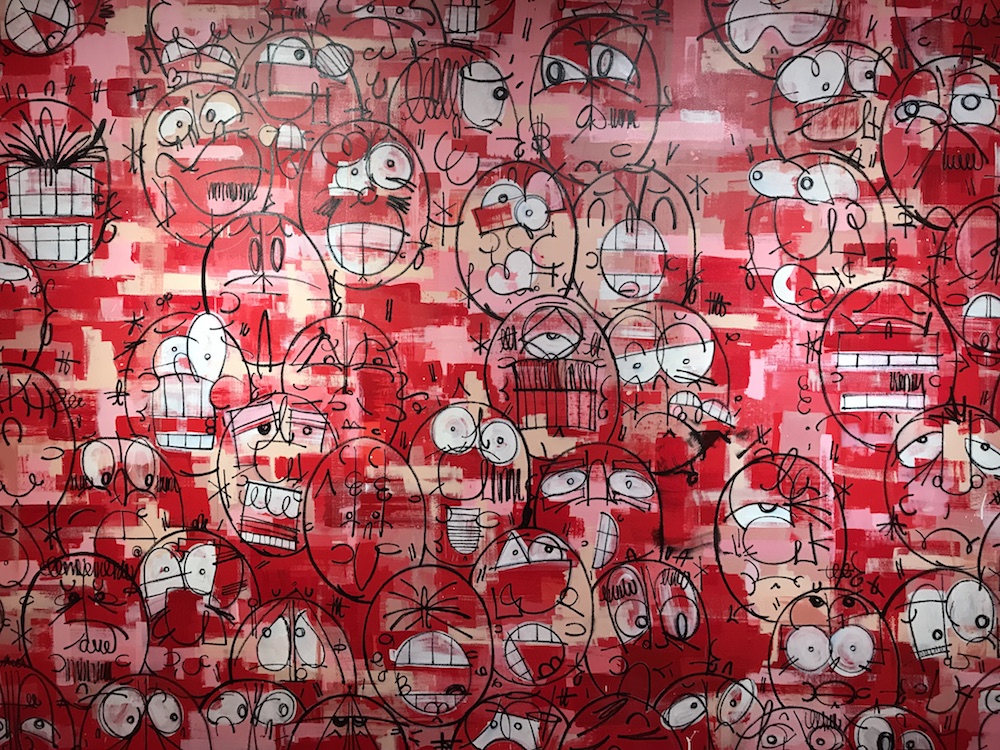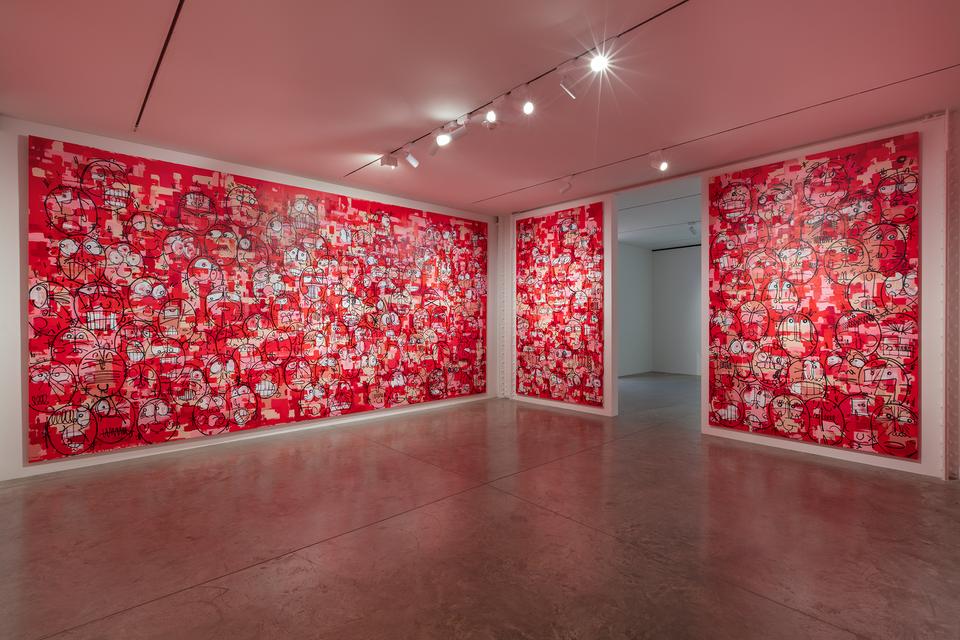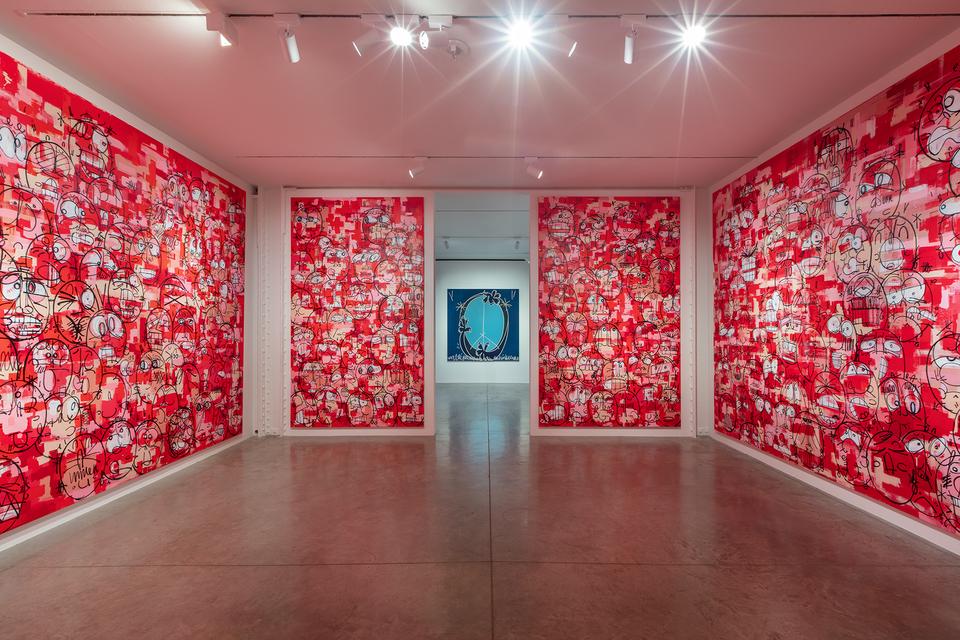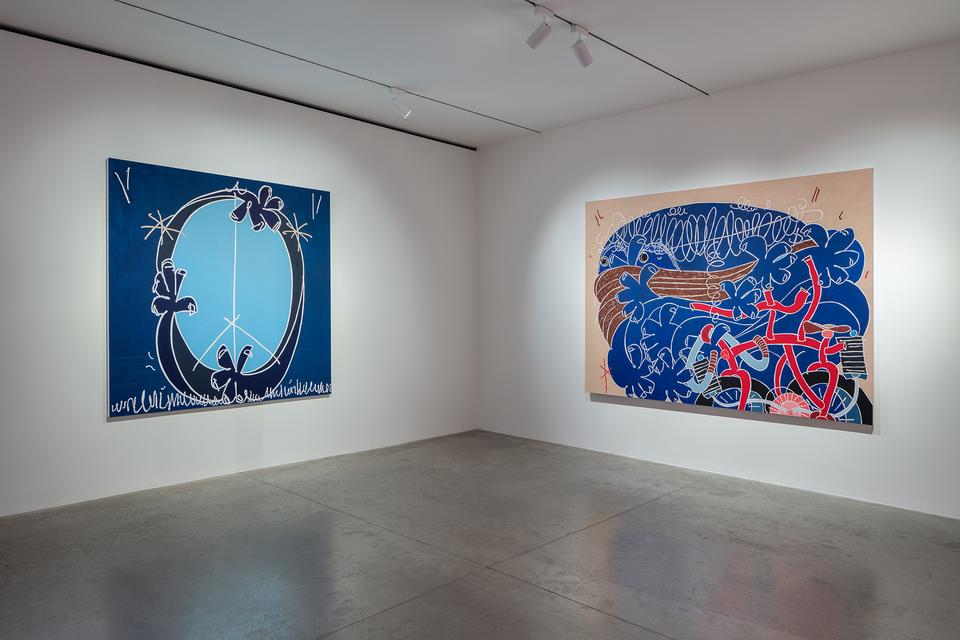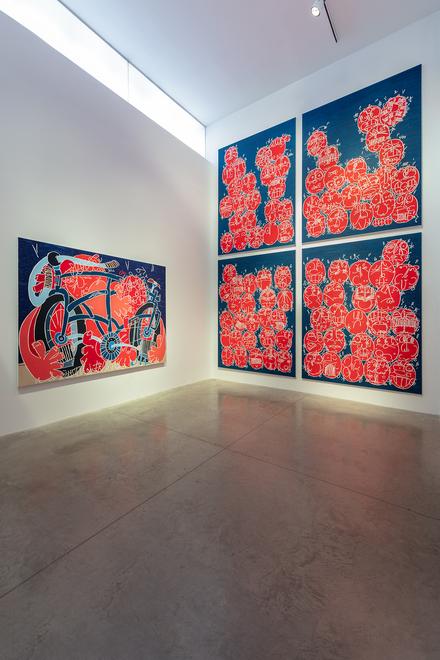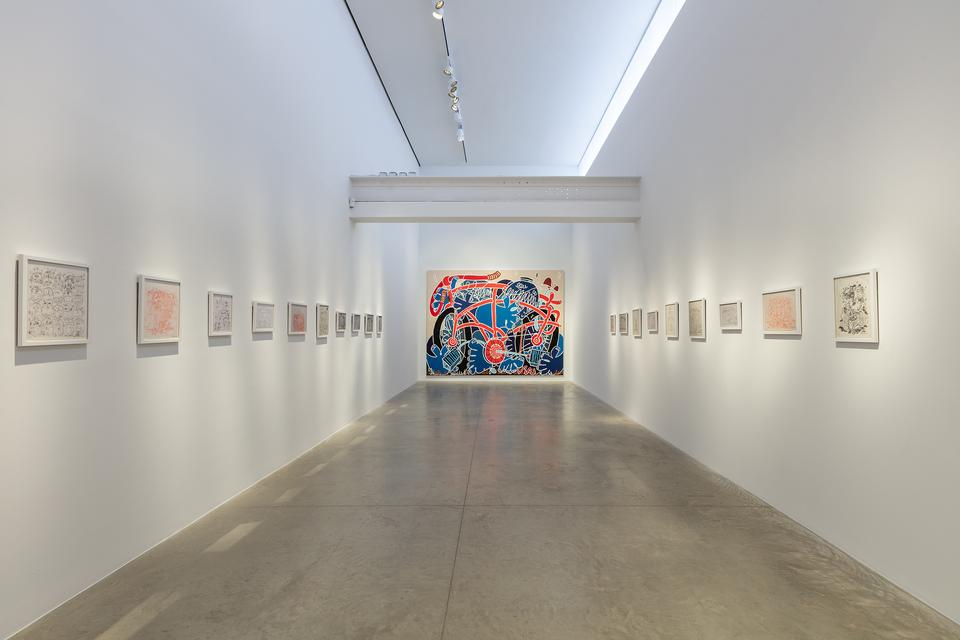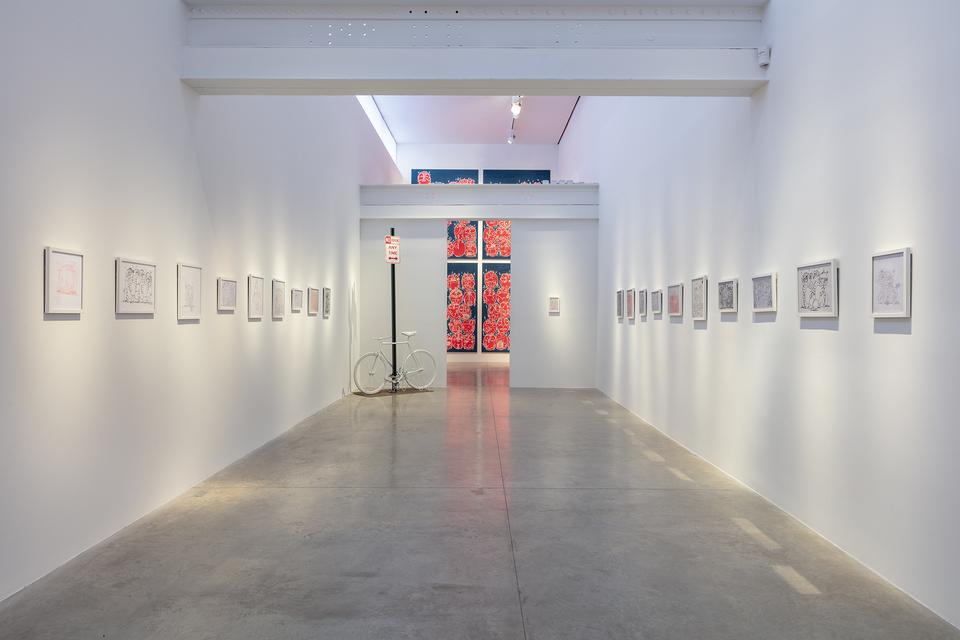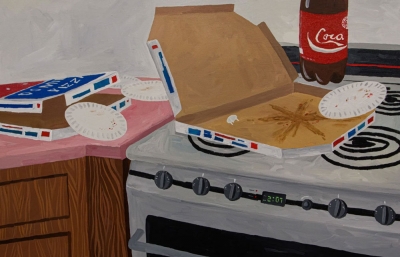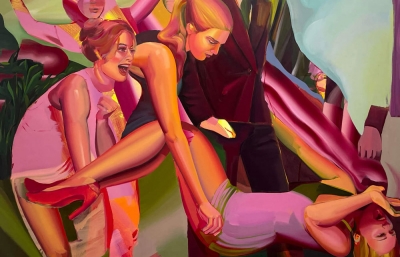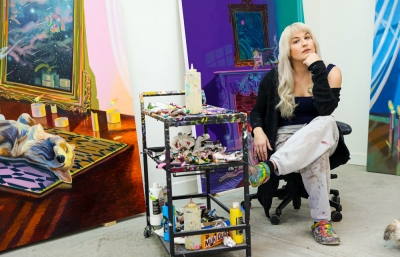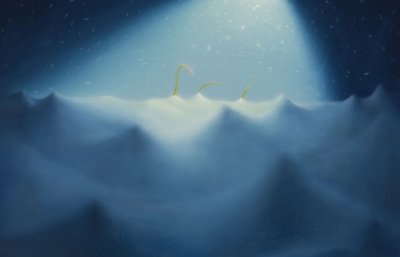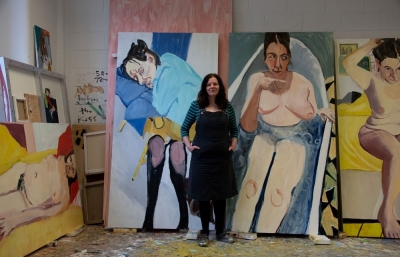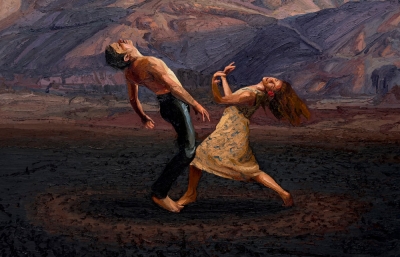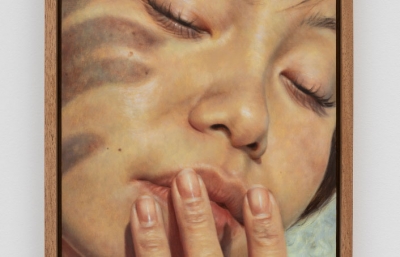A lot has changed for Timothy Curtis over the past few years. After a move from Philly to NYC and a challenge to himself to incorporate oil paint into his already signature style of unique and repetitious faces, Curtis has emerged with not only a new approach to making work but a fresh iconography. From our cover story with Curtis back in April 2017, you can see the evolution even deeper.
Through July 26, Timothy Curtis will be showing Things To Remember at Albertz Benda in NYC. The way the show is laid out gets the viewer into a particular journey. You enter in an almost floor to ceiling infinity room of faces, the core of Curtis's signature practice. He once told us of the faces, "...everything comes from tagging. In Philly, specifically, there is a long history of doing tall tags with faces next to them. In the 1970s, a Philadelphia graffiti writer would put a smiley face next to his name and add a dollar sign, a bow tie, or a top hat. That tradition was carried on for decades by dozens of other Philly writers with their own style and taste. But there were only a few that would really do more than just the traditional Harvey Ball Smiley Face. I wanted to carry on the tradition as well as create a new history for the city and take it past the plain smiley face. So I started drawing all kinds of faces and stockpiling them. I now have fifteen sketchbooks filled with faces, four to a page, back to back to back. As time went on, they became more and more stylized."

But as you walk out from the faces, you see a peace sign, and different elements from Curtis's work that now include these new icons and the heavy use of the bicycle. The works are both fresh and reflective, combing the places Curtis has been and the places he is going. As the gallery notes, "Intertwining and tangled figures, often arranged among playful iterations of institutional environments, suggest the ways in which longstanding systems of power have created obstacles that can simultaneously fortify and ensnare the spirit, and can break or cement friendships."
No doubt Curtis is embarking on a special journey through his art. The honesty and ability to capture the past and present is remarkable, and Things To Remember literally moves his work forward.

